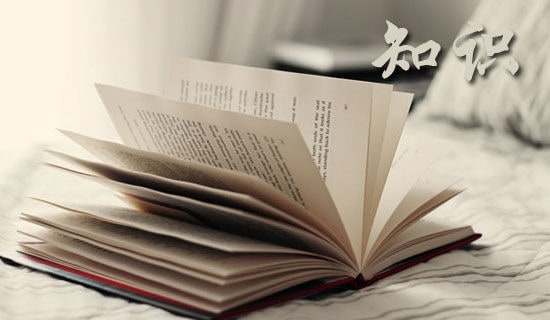- 相关推荐
初一英语下册常考知识点总结
初一的学生上英语课时一定要认真听老师讲,课堂上提到的内容多是重要的知识点,都需要掌握好。下面是百分网小编为大家整理的初一英语知识点总结,希望对大家有用!

初一英语下册知识点
一、一般疑问句及特殊疑问句
1、一般疑问句:能用Yes或No来回答的问句。一般疑问句句尾读升调。
2、特殊疑问句:不能用Yes或No来回答的问句。特殊疑问句句尾读降调。
二、可数名词变复数
可数名词变复数时,有规则变化和不规则变化两种。
1、规则变化:
1)一般情况直接在词尾加“-s ”,如:cake-cakes, bag-bags, day-days, face-faces, orange-oranges等;
2)以s, x, sh, ch结尾的词,要在词尾加“-es ”,如:bus-buses, watch-watches, box-boxes等;
3)以辅音字母加y结尾的词,变y为i再加“-es ”,如:baby-babies, country-countries, family-families等;
4)部分以f (e)结尾的词,变f (e)为“ves ”,如:knife-knives, half-halves等;
5)以o结尾的词,加“-s ”或“-es ”,如:zoo-zoos, photo-photos, tomato-tomatoes, potato-potatoes等。记忆口诀:除了“英雄”hero外,凡是能吃的,加“-es ”,不能吃的加“-s ”。
2、不规则变化:
1)改变单数名词中的元音字母:man-men, woman-women, foot-feet, tooth-teeth等;
2)单、复同形:sheep-sheep, Chinese-Chinese, Japanese-Japanese等;
3)其他形式:mouse-mice, child-children等。
初一英语必备知识
1.in+语言:表示用什么语言或用什么语言说(或写)。如:What’s this in English? He is writing a letter to his father in Chinese.
2.in pairs意为“成双地”,“成对地”,“两人一组”。如:Please ask and answer in pairs.
3.in the wall 表示在墙里面。如:There is a hole in the wall. 如果表示在墙的表面或墙上,用on the wall。如:She put a map of China on the wall.
4.at work意为“在工作”,work前不加the。类似这样的词组还有at home(在家),at school(上学),at table(就餐)等。
5.by+交通工具:表示“乘”。如:
by bike= on the bike
by train= on the train, by boat= on the boat
by plane / air = on the plane, by ship/sea= on the ship
by car = in the car, by bus =in the bus等。
但:步行则用on foot来表达。
6.on one’s way表示“在去的途中”。如:
He found a dog walking in the street on his way home.
on one’s way to school 在某人上学的途中
on one’s way back 在某人返回的途中
7.on duty表示“值日”。如:Who’s on duty today? 今天谁值日?I am on duty. 我值日。
初一英语知识点
this,that和it用法
(1)this和that是指示代词,it是人称代词。
(2)距离说话人近的人或物用this, 距离说话人远的人或物用that。如:
This is a flower. 这是一朵花。(近处)That is a tree. 那是一棵树。(远处)
(3)放在一起的两样东西,先说this, 后说that。如:
This is a pen. That is a pencil. 这是一支钢笔。那是一支铅笔。
(4)向别人介绍某人时说This is…, 不说That is…。如:
This is Helen. Helen, this is Tom. 这是海伦,海伦,这是汤姆。
(5)This is 不能缩写, 而That is可以缩写。如:
This is a bike. That’s a car. 这是一辆自行车。那是一辆轿车。
(6)打电话时,介绍自己用this, 询问对方用that。如:
—Hello! Is that Miss Green? 喂,是格林小姐吗?
—Yes, this is. Who’s that? 是的,我是,你是谁?
注意:虽然汉语中使用“我”和“你”,但英语中打电话时绝不可以说:I am…, Are you…?/Who are you?
(7)在回答this或that作主语的疑问句时, 要用it代替this或that。如: ①—Is this a notebook? 这是笔记本吗?—Yes, it is. 是的,它是。 ②—What’s that? 那是什么?—It’s a kite. 是只风筝。
拓展:几种时态
1,一般现在时
2,一般过去时
3,一般将来时
4,现在进行时
还有几种词
1,名词
2,代词
3,形容词
4,动词
5,冠词
初一英语语法
1、名词
A)、名词的数
我们知道名词可以分为可数名词和不可数名词,而不可数名词它没有复数形式,但可数名词却有单数和复数之分,复数的构成如下:
一)在后面加s。如:fathers,books,Americans,Germans,apples,bananas
二)x,sh,ch,s,tch后加es。如:boxes,glasses,dresses,watches,wishes,faxes
三)1)以辅音字母加y结尾的变y为i再加es如:baby-babies,family-families,duty-duties,comedy-comedies,documentary-documentaries,story-stories
2)以元音字母加y结尾的直接加s。如:day-days,boy-boys,toy-toys,key-keys,ways
四)以o结尾加s(外来词)。如:radios,photos,但如是辅音加o的加es:如:tomatoes西红柿,potatoes马铃薯
五)以f或fe结尾的变f为v再加es(s)。如:knife-knives,wife-wives,half-halves,shelf-shelves,leaf-leaves,yourself-yourselves
六)单复数相同(不变的)有:fish,sheep,deer鹿子,Chinese,Japanese
七)一般只有复数,没有单数的有:people,pants,shorts,shoes,glasses,gloves,clothes,socks
八)单词形式不变,既可以是单数也可以是复数的有:police警察局,警察,class班,同学,family家,家庭成员
九)合成的复数一般只加主要名词,多数为后一个单词。如:action movie-action movies,pen pal-pen pals;但如果是由man或woman所组成的合成词的复数则同时为复数。如:man doctor-men doctors,woman teacher-women teachers
十)有的单复数意思不同。如:fish鱼fishes鱼的种类,paper纸papers报纸,卷子,论文,work工作works作品,工厂,glass玻璃glasses玻璃杯,眼镜,orange桔子水oranges橙子,light光线lights灯,people人peoples民族,time时间times时代,次数,chicken鸡肉chickens小鸡
十一)单个字母的复数可以有两种形式直接加s或’s。如:Is(I’s),Ks(K’s)。但如是缩略词则只加s。如:IDs,VCDs,SARs
十二)特殊形式的有:child-children,man-men,woman-women,foot-feet,mouse-mice,policeman-policemen,Englishman-Englishmen
B)名词的格
当我们要表示某人的什么东西或人时,我们就要使用所有格形式。构成如下:
一)单数在后面加’s。如:brother’s,Mike’s,teacher’s
二)复数以s结尾的直接在s后加’,如果不是以s结尾的与单数一样处理。如:Teachers’Day教师节,classmates’;Children’s Day六一节,Women’s Day三八节
三)由and并列的名词所有时,如果是共同所有同一人或物时,只加最后一个’s,但分别拥有时却分别按单数形式处理。如:Mike and Ben’s room迈克和本的房间(共住一间),Mike’s and Ben’s rooms迈克和本的房间(各自的房间)
2、代词
项目人称代词物主代词指示代词反身代词
人称主格宾格形容词名词性
第一人称单数I me my mine myself
复数we us our ours ourselves
第二人称单数you you your yours yourself
复数you you your yours yourselves
第三人称单数she her her hers herself
he him his his himself
it it its its this that itself
复数they them their theirs these thosethemselves
3、动词
A)第三人称单数
当动词是第三人称单数时,动词应该像名词的单数变动词那样加s,如下:
一)一般在词后加s。如:comes,spells,waits,talks,sees,dances,trains
二)在x,sh,ch,s,tch后加es。如:watches,washes,wishes,finishes
三)1)以辅音字母加y结尾的变y为i再加es。如:study-studies,hurry-hurries,try-tries
2)以元音字母加y结尾的直接加s。如:plays,says,stays,enjoys,buys
四)以o结尾加es。如:does,goes
五)特殊的有:are-is,have-has
B)现在分词
当我们说某人正在做什么事时,动词要使用分词形式,不能用原形,构成如下:
一)一般在后加ing。如:spell-spelling,sing-singing,see-seeing,train-training,play-playing,hurry-hurrying,watch-watching,go-going,do-doing
二)以不发音e的结尾的去掉e再加ing。如:dance-dancing,wake-waking,take-taking,practice-practicing,write-writing,have-having
三)以重读闭音节结尾且一个元音字母+一个辅音字母(注意除开字母组合如show–showing,draw-drawing)要双写最后的辅音字母再加ing。如:put-putting,run-running,get-getting,let-letting,begin-beginning
四)以ie结尾的变ie为y再加ing。如:tie-tying系die-dying死lie-lying位于
4、形容词的级
我们在对两个或以上的人或物进行对比时,则要使用比较或最高级形式。构成如下:
一)一般在词后加er或est(如果是以e结尾则直接加r或st)。如:greater-greatest,shorter–shortest,taller–tallest,longer–longest,nicer-nicest,larger-largest
二)以重读闭音节结尾且1个元音字母+1个辅音字母(字母组合除外,如few-fewer fewest)结尾的双写结尾的辅音再加er/est。如:big-bigger biggest,red-redder reddest,hot-hotter hottest
三)以辅音字母+y结尾的变y为i加er/est。如:happy-happier happiest,sorry-sorrier sorriest,friendly-friendlier friendliest(more friendly mostfriendly),busy-busier busiest,easy-easier easiest
四)特殊情况:(两好多坏,一少老远)
good/well-better best many/much-more most bad/ill–worse worst
little-lessleast old-older/elder oldest/eldest far-farther/further farthest/furthest
5、数词(基变序,有规则;一、二、三,自己背;五、八、九、十二;其它后接th;y结尾,变为i,eth跟上去。)first,second,third;fifth,eighth,ninth,twelfth;seventh,tenth,thirteenth,hundredth;twenty-twentieth,forty-fortieth,ninety-ninetieth
今天的内容就介绍到这里了。
【初一英语下册常考知识点总结】相关文章:
地理常考知识点总结大全06-02
高考化学常考的知识点总结12-02
高考常考的化学知识点总结12-05
中考政治常考的知识点总结12-04
初三化学下册常考知识点归纳11-30
高考化学必备的常考知识点总结12-05
高一政治常考的知识点总结12-05
初中化学常考的知识点总结12-05
高三化学常考的知识点总结12-02